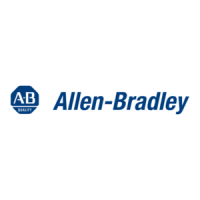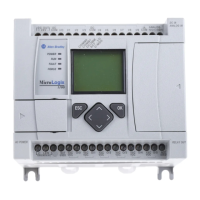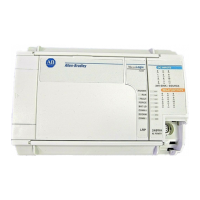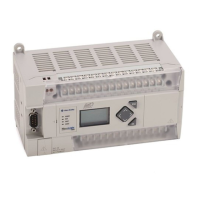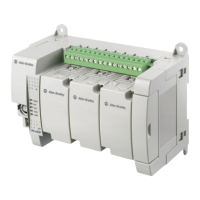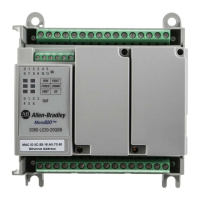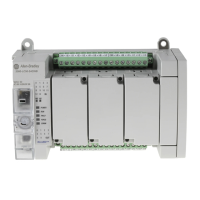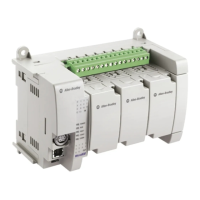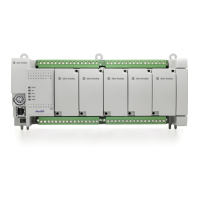Hardware Reference
A–9
Controller Dimensions
Refer to the following table for the controller dimensions.
Controller: 1761- Length: mm (in.)
Depth: mm (in.)
➀
Height: mm (in.)
L10BWA 120 (4.72)
L16AWA 133 (5.24)
L16BWA 120 (4.72)
L20AWA-5A
L20BWA-5A
3 (
.8
)
L32AWA
200 (7.87)
L32BWA
L32AAA
8
(3.15)
L10BWB
L16BBB
120 (4.72)
L16BWB
L20BWB-5A
4
(1.5
)
L32BBB
200 (7.87)
L32BWB
➀
Add approximately 13 mm (0.51 in.) when using the 1761-CBL-PM02 or 1761-CBL-HM02
communication cables.
For a template to help you install your controller
, see the
MicroLogix 1000
Pr
ogrammable Contr
ollers Installation Instructions
, publication 1761-5.1.2 or the
MicroLogix 1000 (Analog) Pr
ogrammable Contr
ollers Installation Instructions
,
publication 1761-5.1.3 that were shipped with your controller.
efesotomasyon.com - Allen Bradley,Rockwell,plc,servo,drive
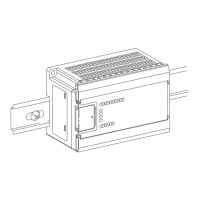
